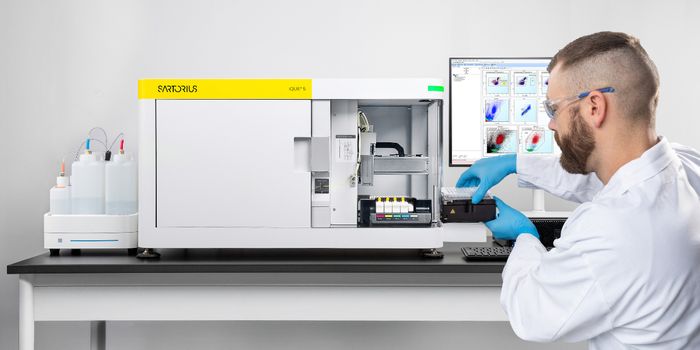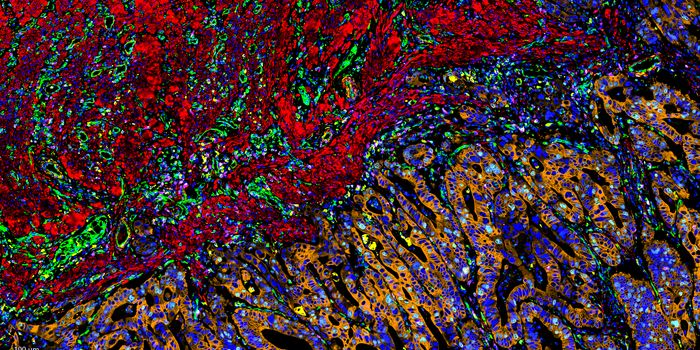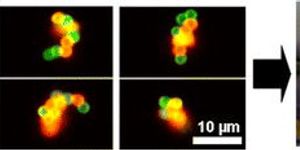
The first human papillomavirus (HPV) DNA test for primary cervical cancer screening passed muster with the Food and Drug Administration (FDA) in April 2014, but was not widely adopted by clinicians at that time since medical societies did not follow suit by adopting new screening guidelines.
Fast forward to January 2015, to the Interim Guidance Report issued jointly by the American Society for Colposcopy and Cervical Pathology [www.asccp.org] (ASCCP) and the Society of Gynecologic Oncology [www.sgo.org] (SGO), which does just that.
"Advances in molecular biology are having a great effect on the delivery of health care," says Herschel Lawson, MD, ASCCP's chief medical officer. "The availability of primary HPV testing, used as recommended, adds an important option to available recommended testing methods for determining future risk of cervical cancer and assisting detection of cervical cancer precursors. The most important message for providers and the community is that cervical cancer screening using any of the recommended methods saves lives."
In the process, SGO and ASCCP reviewed 11 studies, including "Primary cervical cancer screening with human papillomavirus: End of study results from the ATHENA study using HPV as the first-line screening test.
"The scientific evidence clearly demonstrates that primary HPV testing outperforms cytology or Pap as a screening test," says Warner K. Huh, MD, division director and professor in the division of Gynecologic Oncology, University of Alabama, Birmingham, and lead author of the Interim Guidance Report. "This has been confirmed from numerous European and Canadian studies as well as the ATHENA trial. There are going to be fewer false negatives with HPV, and arguably, we have been using a less-sensitive test for screening for a while now."
While high-risk HPV infections generally disappear without damaging women's health, in some 10 percent of cases a chronic infection may pose a cancer risk. Most cases of cervical cancer stem from HPV infection, and HPV-16 and -18 are at the root of about 70 percent of cervical cancers. Using a sample of cervical cells, the cobas HPV Test [bit.ly/1y5YEWA], Roche Molecular Systems Inc, Pleasanton, Calif, detects DNA from 14 high-risk HPV types, including types 16 and 18. Follow-up for women who test positive for the latter is a colposcopy; a Pap test is warranted for women who test positive for any of the other high-risk types, to find if a colposcopy is needed.
Northwest Pathology, Bellingham, Wash, which oversees the clinical laboratories and provides anatomic pathology services for eight regional hospitals and for neighboring clinics, had been running the cobas HPV test for years for co-testing, with a Pap-but, an early adopter, the lab began offering it for primary screening right after the FDA approved the test for that purpose. "Not many pathologists were using it for primary screening at that time," says Ryan Fortna, MD, PhD, who is board certified in anatomic pathology and dermatopathology and oversees Northwest's molecular pathology department. Fortna also serves as chair of the cancer committee, United General Hospital, Sedro-Woolley, Wash, and lectures on molecular pathology techniques in the United States and Canada.
He has tried to get the word out. "We're not necessarily pushing our clinicians to use this instead of the older screening algorithms," Fortna says. "We wanted to make it available because we think it makes sense." The lab revised their requisition forms, sent letters to their clinicians, and sent marketing staff to meet with them face-to-face. Some expressed interest, but most held off. "Clinicians are very heavily interested in following national guidelines, and also there's a little bit of a slow adoption of new algorithms. We're doing some tests this way [about five percent], but I think it's going to be much more widely adopted now with these new guidelines."
Before the guidance was issued on January 8, some voiced objections to using this test for primary screening (eg, no evidence-based guidelines, pricier than Pap, Pap's stellar track record, positive test for types 16 and 18 reflex to colposcopy or biopsy minus evidence of abnormal cells, infections may disappear with no intervention, and women with HPV-negative results may still get cervical cancer). Some have scientifically based rationales, Fortna says, others not so much.
In the latter category, the Pap's special history. "The Pap was a revolutionary test, in that it was one of the first really effective screening tests for anything, especially for any kind of cancer," Fortna says. "And so I think people hold the Pap test near and dear to their heart. It's such a central focus of the whole OB-GYN field, along with its history, that I think letting go of it is a very difficult step. I think that's legitimate." The new guidelines do not drop the Pap (which has tremendously reduced cervical cancer in developed countries), it is still used in certain situations, just not for primary testing.
Job security may play a role too. "There are many people whose jobs rely on screening Paps by morphology, both pathologists and cytotechnologists" Fortna says. "The field is not entirely dependent on screening Paps, but a large percentage of cytology cases are Paps. So I think that there's also a vested interest in Paps remaining a viable testing method."
In terms of pricing, HPV primary screening would be less expensive than co-testing, he says.
More-legitimate reasons for some to hesitate in converting to primary HPV screening include those things that can be seen on a Pap that would not appear on an HPV test-ancillary findings. Let's subcategorize those into, first, what do you consider the Pap test to be a screening test for? It is meant to screen for cervical cancer. "There are some cases of invasive cervical squamous cell carcinoma that are HPV-negative, or somehow HPV-undetectable, maybe the virus has mutated or been partially expelled in the later stages of tumorigenesis," Fortna says, adding that there is also a very small percentage of cases that were not HPV-related, even at the beginning. "I personally think the number of cases that will be missed that way is vanishingly small, especially because if the patient has a bulky invasive tumor it's often going to be noticed symptomatically or on the pelvic exam anyway, in many cases. Nevertheless, the fact that a small percentage of invasive carcinomas are HPV-undetectable is probably one of the few legitimate arguments." (This would pertain to patients who undergo regular screening.)
Another is that there are things that can be seen on a Pap test that are not the primary indication for it. "You can sometimes find an endometrial carcinoma," Fortna says. "Or other things like infections, such as candida, BV [bacterial vaginosis], herpes, or others. These are all generally considered incidental findings that aren't the primary reason for doing the screening. Some people don't like the fact that you'll lose out on that if you stop doing the Pap. And I think that's legitimate too, but you have to phrase your argument appropriately. Are we talking about the Pap as a cervical cancer screen, or are we talking about the Pap as a general cervical health screen?"
Circling back to adoption of primary screening, this early adopter holds firm. "I think if what you're really doing is screening for cervical cancer, then it makes a lot of sense to choose the most sensitive method available, which at this point looks to be, at least by a small margin, the HPV test [in comparison to morphology]," Fortna says. "But I don't fault any clinician for wanting to continue co-testing. I'm not saying we should all adopt primary screening automatically and that it should be the only test method available, but I think it should be an available method for clinicians who choose it."
Though more research is needed to reconcile how primary HPV screening dovetails with current screening guidelines and how to handle abnormal results and precancer diagnoses, the medical societies' recommendations are a provisional guide for clinicians who wish to incorporate primary HPV testing into patient care.
REFERENCES
1. Huh WK, et al, Use of primary high-risk human papillomavirus testing for cervical cancer screening: Interim clinical guidance, Gynecol Oncol (2015), http://dx.doi.org/10.1016/j.ygyno.2014.12.022 [bit.ly/1BUj]
2. Wright TC, et al, Primary cervical cancer screening with human papillomavirus: End of study results from the ATHENA study using HPV as the first-line screening test, Gynecol Oncol (2105), http://dx.doi.org/10.1016/j.ygyno.2014.11.076 [bit.ly/1sqBRnt]
This is the second article in a series. The first article, titled "New Year Brings Overhaul of CPT Test Codes for HPV: Trio of new codes differentiate HPV genotypes by cancer risk," is found here: bit.ly/1xpYVhY
The Interim Guidance Report recommends:
--Primary HPV testing can be considered for women starting at age 25.
--Women younger than 25 should continue to follow existing guidelines that recommend cytology alone, starting at 21.
--Women with a negative primary HPV test result need not be retested again for 3 years (the same screening interval recommended in current guidelines for a normal cytology test result).
--An HPV test positive for HPV-16 and -18, should be followed with colposcopy.
--A test that is positive for HPV types other than 16 and 18 should be followed by reflex cytology testing.
 The first human papillomavirus (HPV) DNA test for primary cervical cancer screening passed muster with the Food and Drug Administration (FDA) in April 2014, but was not widely adopted by clinicians at that time since medical societies did not follow suit by adopting new screening guidelines.
The first human papillomavirus (HPV) DNA test for primary cervical cancer screening passed muster with the Food and Drug Administration (FDA) in April 2014, but was not widely adopted by clinicians at that time since medical societies did not follow suit by adopting new screening guidelines.








